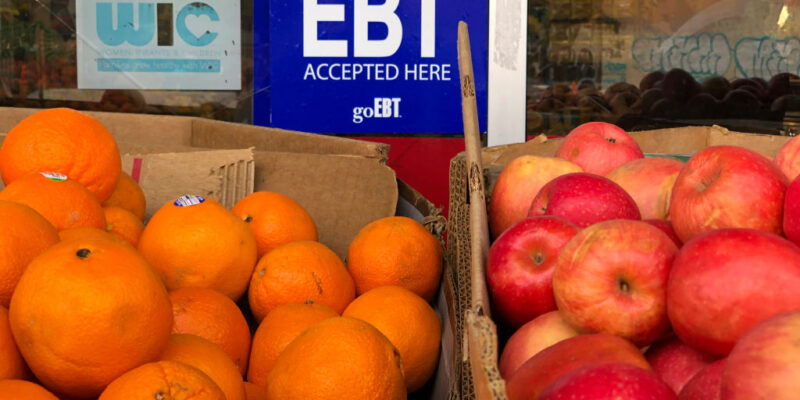Louisiana’s political left has a full-court press on to try to score political points over the Republican Gov. Jeff Landry Administration decision not to dole out more cash to lower-income households with children – all the while ignoring data that supports that decision.
Liberal politicians and special interests have criticized the choice not to participate in the Summer EBT program, which gives cash benefits of $40 a school-aged child for three months in the summer. It’s estimated that it would have shoveled $71 million to state families out of federal monies.
Of course, that attitude acts as if this is free money, when in fact Louisiana taxpayers will bear the costs through their federal taxes, an increase in federal debt that they eventually will have to pay back with interest, and/or with a reduction in services elsewhere. Further, plenty of other programs exist to address food needs, including a couple geared specifically toward school children in the summer that operate far more efficiently than the Summer EBT design, as well as more general programs that cover the same clientele base, principally the Supplemental Nutrition Assistance Program that in Louisiana pays a family of two $535 a month.
Sec. of Children and Family Services David Matlock, whose department would oversee any such program, in a recent radio interview pointed out these aspects, as well as noted the administrative cost of around $3.6 million annually the state would bear on a recurring basis fell well short of actual costs to get the program up and running, given the technological and personnel issues involved. But he also emphasized, referring to a point the left desperately tries to ignore, how giving out more welfare skews behavior in the direction of dependency and gamesmanship.
For a dirty secret is Louisiana families are among the highest spending in raw dollars on food. This is despite the fact that the average cost of groceries for the state’s families falls five percent below the national average, ranking the third-lowest among the continental U.S. states, yet it ranks eighth highest in dollars per week spent on food. On a cost-adjusted basis, this means Louisiana households spend more on food in raw terms than any other state.
The old shibboleth is that Louisianans love their food – and likely related to having the second highest obesity rate in the country – certainly seems borne out by this data, but a deeper dive shows there’s much more to it than that. As it’s not higher pricing, the main culprit would appear to be related to higher volume of food consumed per household.
To determine whether and how that plays out, begin with the data showing a direct inverse relationship between education and spending; the lower the level of educational attainment, the higher the amount spent, even though those at lower levels typically have significantly fewer dollars available to spend because of lower incomes. As well, SNAP clients spend 16 percent higher on food than non-clients.
One explanation for both may be lower income families tend to have more children. Of the 13.7 percent of families receiving SNAP nationally, less than 10 percent of two-person households utilize SNAP, while over a third of those with seven or more do, with an increase in proportions noted as family size increases. More mouths to feed would take more resources.
And, Louisiana ranks tenth among states in average family size, but every state ahead of it had higher prices and some even higher median household incomes, and yet these don’t spend nearly as much on food as do Louisianans.
At the same time, lower income families also tend to be single-parent, typically female. We know where babies come from, and almost always it’s a conscious decision voluntarily undertaken to engage in behavior to cause eventual births – a decision, as a number of social scientists have noted across many disciplines with the data in tow to support them, that is influenced somewhat by state subsidization most prominently in the form of welfare benefits.
Many have observed since the dawn of extensive federal government transfer programs that welfare produced perverse incentives for individuals that steered their behavior away from self-sufficiency that would lead to a trap of ever-increasing transfer payment consumption inverse to productive economic behavior. Or to put it in terms of the Summer EBT debate, if families already spend amounts on food well above the average for those similarly situated that demonstrates any or all of sufficiency, preference for more expensive food, and/or lack of care in source of that food (for example, paying more for convenience or engaging in illegal use of benefits), sending that amount even higher for most is a blunderbuss of a policy preference for an assumed problem of food insecurity that in the main may be more a product of over-consumptive and/or wasteful behavior. As well, the high obesity rates, where obesity is negatively related to income, serve as another indicator besides high relative food spending that food insecurity isn’t a pressing issue for many in the state.
All of this suggests additional cash food benefits – with even fewer strings than SNAP – in Louisiana is a low payoff strategy to address alleged hunger issues with children that instead serve for too many as more of an incentive to overconsumption rather than as a tool towards self-sufficiency. In light of the data, Matlock is absolutely correct and his critics are left without an adequate argument.
Advertisement
Advertisement

